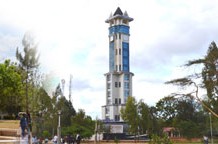The original Concorde, a flying masterpiece, could zip from London to New York in a breakneck 3 hours and 30 minutes. For many people, it was a dream to experience faster-than-sound travel, and the prospect of cutting the seven to eight hour journey to half the time was enough to make even the most robust traveler giddy with delight. Aircraft manufacturer Airbus has been taking inspiration from this flying dream, and they have now won a patent for the next stage in speedy travel. And this monster goes faster and higher than ever before seen in commercial air travel.
One hour. That’s how long London to New York would take in the planned hypersonic plane, called the “Ultra-rapid air vehicle” but dubbed Concorde 2.0. This new passenger aircraft would fly at up to four and a half times the speed of sound, Mach 4.5, compared to up to Mach 2.5 for the original Concorde.
Concorde ran into a couple of problems when it came to sound pollution that Concorde 2.0. hopes to solve. Blasting through the atmosphere faster than the speed of sound is a noisy business – so noisy that flying Concorde over populated areas was extremely disruptive. Often therefore having to fly slower in these areas, it couldn’t quite live up to its high-speed potential.
Concorde 2.0 will avoid these problems as it climbs high up into the atmosphere, dissipating its noise energy horizontal to Earth by rotating its tail fins. This way, the sound waves won’t reach the ground. Where Concorde flew at around 18 kilometers (60,000 feet), Concorde 2.0. will eclipse that at around 30 kilometers (100,000 feet); nearly twice the altitude.
Passengers of Concorde 2.0 would be in for a bit of a space-like adventure. The plane takes off vertically just like a Space Shuttle. After takeoff, a rocket motor would shoot the plane high into the sky where the ramjets would take over and accelerate the aircraft to hypersonic speeds (loosely defined as around Mach 5). Ramjets are more commonly found on missiles than commercial aircrafts.
To take off vertically, passengers would have to sit in hammock-like seats. And, instead of the 100-passenger Concorde, the Concorde 2.0 would only carry 20 passengers.
Unfortunately, you’re not going to be able to book a seat on this vehicle anytime soon. The project is predicted to take 30 to 40 years before it becomes a commercially viable form of travel.



























